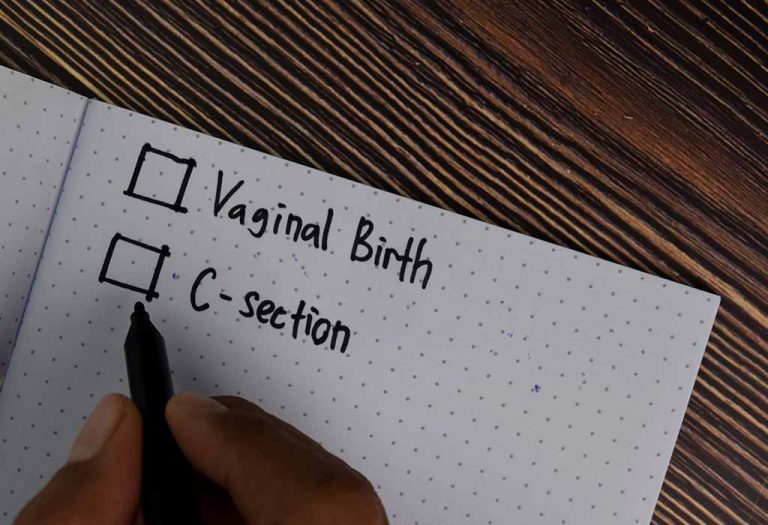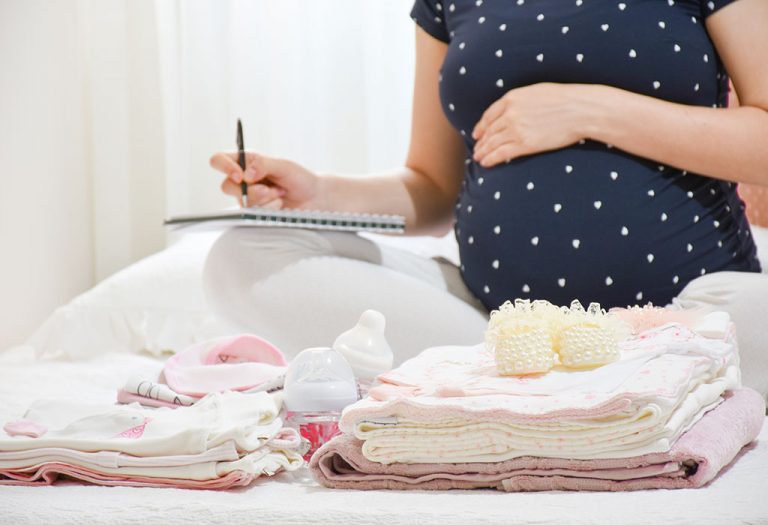Cervical Effacement – Meaning, Signs and Measuring

In order for the baby to be born, the strong and firm muscles forming the cervix need to soften, stretch, and thin out or effaced and open. This is important to allow the baby to move down from the uterus and into the birthing tract. Prostaglandins are chemicals produced by the body towards the end of pregnancy, which softens the cervix and helps it dilate. This process is called effacement and is a crucial step in the birthing process, ensuring the cervix becomes flexible and wide enough for the baby to pass through safely. It plays a vital role in preparing the body for labor.
What Is Effacement of the Cervix?
Let’s take a look at effaced meaning. In the last weeks of pregnancy, you are checked for effacement, which is measured in percentages. Once the baby’s head is stationed, it starts to drop closer to the cervix, which prepares itself for delivery. When there are no changes to the cervix, it is called 0% effacement. The cervix, which is normally 2-3 cm long, begins to shorten to 1cm at the onset of labor, softens, and becomes thinner or effaces gradually. This process is called effacement of the cervix, and you are said to be 50% effaced in pregnancy. Other terms used for this process is “cervical thinning” and “ripening” of the cervix.
How to Measure Cervical Effacement
Effacement is measured in percentages. During pregnancy, there are no changes to the tightly closed cervix, and it is called 0% effaced cervix. As the cervix softens, thins, and is pulled around the baby’s head, it gets to half the normal thickness or 50% cervical dilation and effacement with dilation of 1-2 cm. When 100% effaced, the cervix is completely thinned out, and delivery is around the corner. The dilation or stretching and opening of the cervix are measured in centimetres. When completely dilated the opening is 10 cm, and you are ready for a vaginal delivery.
How Long Does It Take?
Effacement is a gradual process that varies significantly from one person to another. It depends on factors such as whether it’s your first pregnancy, the readiness of your body for labor, and your overall health. Here’s a breakdown of what can affect the timeline of effacement:
- First-Time Pregnancy: Effacement often takes longer for first-time mothers, as the cervix needs more time to soften and thin out before dilating.
- Subsequent Pregnancies: If you’ve had previous pregnancies, your body may efface and dilate more quickly due to prior cervical changes.
- Timing of Labor: Effacement may begin several weeks before labor in some cases, while others might experience it rapidly within hours or days of active labor.
- Braxton Hicks Contractions: These “practice” contractions can help the cervix begin the effacement process in the weeks leading up to labor.
- Medical Interventions: In some situations, doctors may use medications or procedures to speed up effacement if labor needs to be induced.
- Individual Variability: Every pregnancy is unique. For some women, effacement happens slowly over weeks, while for others, it occurs quickly as labor begins.
Signs and Symptoms of Effacement
Changes to the cervix are checked during a pelvic exam from the onset of labor. During labor, your effaced cervix gets shorter and thinner to stretch and open around your baby’s head. Both dilation and effacement measure the progress in labor due to effective contractions of the uterus.
At the onset of labor, irregular contractions with long periods in between happen to allow cervical dilation of 1 cm per hour. At 2 cm dilation, the cervix begins to open, and the contractions move the baby downwards. At 6 cm dilation, you will experience more regular and frequent contractions. Finally, at 10 cm dilation, the cervix is 100% effaced and long continuous contractions signal active labor has begun to start pushing your baby out.
The “station” is recorded as a number between -5 and +5 and indicates the position of your baby’s head. -5 to -1-station means that the head isn’t engaged in the pelvis, 0-station would indicate the head is “engaged” and has entered the vaginal canal, while 1 to +4-station would mean the baby is progressing down the vaginal canal. At +5-station, your baby is crowning. Even if dilation is complete, the mother should not push until 0-station meaning the head is engaged in the canal.
First-time mothers are 100% effaced before dilation begins. Women who have birthed before can be dilated before effacement is complete.
Difference Between Effacement and Dilation
Effacement and dilation are two distinct but interconnected processes that prepare the cervix for childbirth. Effacement refers to the thinning and softening of the cervix, measured in percentages from 0% (not effaced) to 100% (completely effaced). On the other hand, dilation is the opening of the cervix, measured in centimeters from 0 cm (closed) to 10 cm (fully dilated). Effacement typically occurs before significant dilation, especially in first-time pregnancies, as the cervix needs to thin out before it can open. Together, these processes enable the baby to move from the uterus into the birth canal.
Cervical Effacement Chart
A cervical effacement chart helps visualize the progression of effacement during labor. It illustrates how the cervix thins and prepares for childbirth, measured in percentages. Below is a simple guide:
Complications to Effacement
Effacement is a natural part of labor, but certain complications can arise that may slow or disrupt the process. Understanding these challenges can help in addressing them effectively.
- Cervical Insufficiency: A weak cervix may efface too early in pregnancy, increasing the risk of preterm labor.
- Prolonged Effacement: The cervix may take longer to thin out, delaying the onset of active labor and potentially requiring medical intervention.
- Inadequate Contractions: Weak or irregular uterine contractions may fail to stimulate proper effacement.
- Baby’s Position: If the baby is in a breech or transverse position, it can hinder the cervix’s ability to thin effectively.
- Scar Tissue on the Cervix: Previous surgeries or procedures on the cervix can lead to stiffness, making effacement more challenging.
- Maternal Health Issues: Conditions such as infections or hormonal imbalances may interfere with the natural effacement process.
When to Consult the Doctor
While some changes in the cervix during pregnancy are normal, certain symptoms or complications may require medical attention. It’s important to be aware of any signs that might indicate a problem or risk to your pregnancy. Consulting a doctor in such cases can help ensure both mother and baby’s safety.
- Premature Effacement: If the cervix begins to efface significantly before 37 weeks of pregnancy, it could be a sign of preterm labor.
- Heavy Bleeding: Spotting or light bleeding can be normal, but heavy bleeding or clotting may signal complications such as a placental issue or miscarriage.
- Severe Abdominal Pain: Intense pain, especially if accompanied by cramping, could indicate issues like an ectopic pregnancy or labor starting prematurely.
- Infrequent or Irregular Contractions: If contractions are not regular or strong enough to lead to effacement, but are frequent or painful, they could be a sign of preterm labor.
- Decrease in Baby’s Movement: A sudden or significant reduction in fetal movement may require immediate evaluation.
- Signs of Infection: Symptoms like fever, chills, or unusual discharge could indicate an infection that may affect the cervix and labor process.
FAQs
1. Can excessive bed rest delay effacement?
Yes, while bed rest is sometimes recommended during pregnancy, especially in cases of cervical issues, excessive bed rest can sometimes slow down the effacement process. Movement and gentle activity help stimulate uterine contractions that encourage effacement, and a lack of activity can hinder this.
2. Can a high-protein diet speed up effacement?
There is some research suggesting that a diet rich in protein may help support uterine activity and promote the softening of the cervix. However, this is not universally proven, and more research is needed to understand its impact on the effacement process.
3. Can emotional trauma or sudden stress affect effacement?
Sudden emotional trauma or intense stress might influence hormonal balance, which could, in turn, disrupt the natural timing of effacement. This may delay or speed up cervical changes, depending on the severity and timing of the stress experienced.
4. Can effacement occur without contractions in some cases?
In rare instances, effacement can occur without noticeable contractions. This can happen particularly in women who experience very mild or irregular contractions, often called “silent labor,” where the cervix begins to soften and thin without the typical painful contractions.
We hope we’ve answered your question: In pregnancy, what does effaced mean? The process of effacement is essential for a vaginal birth, and you need to be prepared for it. If you have any concerns or questions about effacement, labor, or delivery, get in touch with your obstetrician or gynaecologist to address your concerns.
References/Resources:
1. Effacement; Cleveland Clinic; https://my.clevelandclinic.org/health/symptoms/23156-effacement
2. Effacement; American Preganancy Association; https://americanpregnancy.org/healthy-pregnancy/labor-and-birth/effacement/
3. Preterm Labor and Birth: FAQs; American College of Obstetricians and Gynecologists; https://www.acog.org/womens-health/faqs/preterm-labor-and-birth
4. Langen. E, Weiner. S, Bloom. S, Rouse. D, Varner. M, et al.; Association of Cervical Effacement With the Rate of Cervical Change in Labor Among Nulliparous Women (Obstetrics & Gynecology); National Library of Medicine; https://pmc.ncbi.nlm.nih.gov/articles/PMC5102500/; March 2017
5. Nott. J, Bonney. E, Pickering. J, Simpson. N; The structure and function of the cervix during pregnancy; Science Direct; https://www.sciencedirect.com/science/article/pii/S2214854X1530008X; March 2016
6. Rhoades. J, Stout. M, Roehl. K, Tuuli. M, et al.; Normal cervical effacement in labor; American Journal of Obstetrics and Gynecology; https://www.ajog.org/article/S0002-9378(16)31997-4/fulltext; January 2017
7. Cervical effacement and dilation; Mayo Clinic; https://www.mayoclinic.org/healthy-lifestyle/labor-and-delivery/multimedia/cervical-effacement-and-dilation/img-20006991
Also Read:
Cervical Cerclage
Cervical Length in Pregnancy
Cervix Dilation During Labor and Birth
Cervix Position in Early Pregnancy
Was This Article Helpful?
Parenting is a huge responsibility, for you as a caregiver, but also for us as a parenting content platform. We understand that and take our responsibility of creating credible content seriously. FirstCry Parenting articles are written and published only after extensive research using factually sound references to deliver quality content that is accurate, validated by experts, and completely reliable. To understand how we go about creating content that is credible, read our editorial policy here.
























